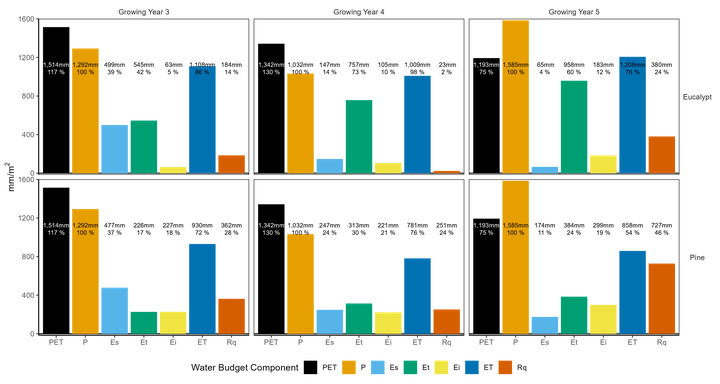Evapotranspiration partitioning of Eucalyptus benthamii and Pinus taeda during early stand development

Abstract
Increasing demand for bioenergy from intensively managed woody crops raises concerns of increased evapotranspiration and potential decreases in water yield. Pinus taeda (loblolly pine) is currently the most cultivated species in the southeastern U.S., the country’s wood basket. However, Eucalyptus species could achieve greater productivity but with unknown ramifications for water budgets. To address the knowledge gap, we determined annual water budgets of loblolly pine and Eucalyptus benthamii (eucalypt) from growing years three through five in a replicated (n=3) two-factor design comparing species and groundwater depth. Paired plots were established across a depth-to-groundwater gradient from shallow (~2 m) to deep (~8 m). Hydrologic budgets were constructed by measuring precipitation, interception, soil evaporation, and transpiration. Eucalypt evapotranspiration and above-ground biomass production for growing years three through five were on average 23 and 13% greater than pine, respectively, however evapotranspiration did not differ across groundwater depths. At the end of growing year five, eucalypt had higher transpiration and evapotranspiration per unit area than pine. Soil evaporation was substantial in young plantations (nearly 500mm) in growing year three but declined as the canopy closed. Partitioning of evapotranspiration components in developing bioenergy plantations was dynamic due to canopy development driven decreases in soil evaporation and increases in transpiration and interception, total evapotranspiration was less variable from year to year. Water use efficiency (WUE, kg biomass/m3 H2O) per unit evapotranspiration was similar between species but WUE per unit transpiration was higher in pine. Considering total evapotranspiration in young plantations can affect WUE interpretations.